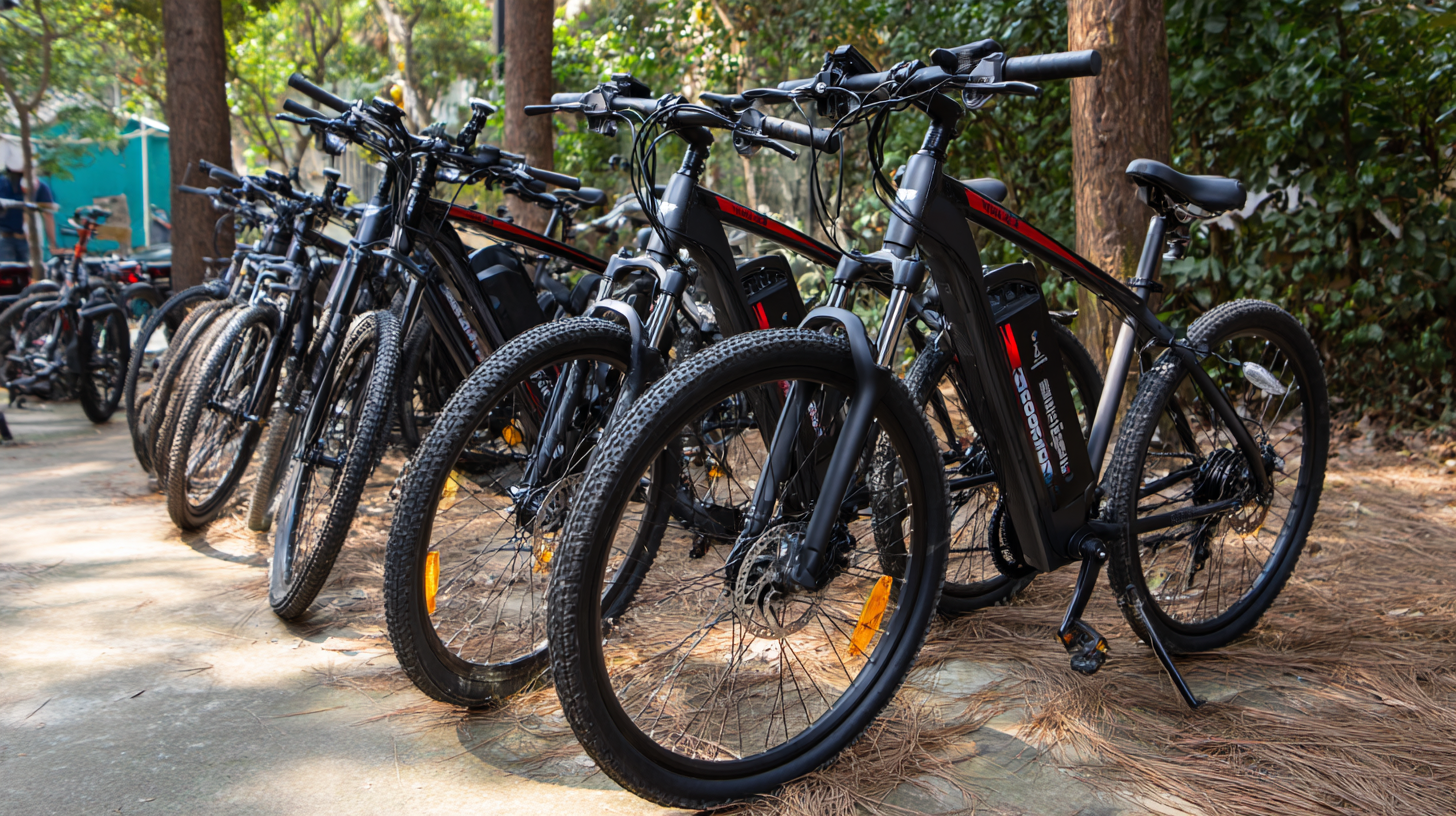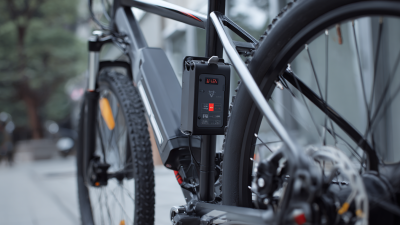 Choosing the right Ebike Lithium Battery is crucial for maximizing your cycling experience, whether you are a casual rider or an avid cyclist. With a plethora of options available on the market, it can be overwhelming to determine which battery best suits your needs. Factors such as battery capacity, weight, charging time, and durability play a significant role in your decision-making process. Additionally, understanding the compatibility of the battery with your specific Ebike model is essential to ensure optimal performance. In this guide, we will explore the key considerations you should take into account when selecting an Ebike Lithium Battery, helping you to enhance your rides and make the most of your cycling adventures.
Choosing the right Ebike Lithium Battery is crucial for maximizing your cycling experience, whether you are a casual rider or an avid cyclist. With a plethora of options available on the market, it can be overwhelming to determine which battery best suits your needs. Factors such as battery capacity, weight, charging time, and durability play a significant role in your decision-making process. Additionally, understanding the compatibility of the battery with your specific Ebike model is essential to ensure optimal performance. In this guide, we will explore the key considerations you should take into account when selecting an Ebike Lithium Battery, helping you to enhance your rides and make the most of your cycling adventures.
When choosing the right lithium battery for your e-bike, understanding the different types available is crucial. Most electric bikes function on 36V or 48V batteries, with high-performance models occasionally requiring 52V or even 72V. Selecting a battery that matches your bike's voltage is essential to ensure optimal performance and safety. Lithium-ion batteries, known for their energy density and rechargeability, are the most common type used in e-bikes.

Tips: Consider your cycling needs—whether for commuting, recreation, or cargo hauling—as this will influence the battery type you should choose. Additionally, pay attention to the battery's capacity, as it directly affects your range. The higher the amp-hour (Ah) rating, the longer you can ride between charges.
Battery safety is another essential aspect to keep in mind. Always research and opt for reputable brands when purchasing, as quality can significantly impact both the performance and longevity of your e-bike battery. Reading reviews and expert recommendations can provide valuable insights and help you make an informed decision.
When selecting the ideal lithium battery for your ebike, some key specifications should be prioritized to ensure optimal performance and suitability for your cycling habits. The capacity of the battery, measured in watt-hours (Wh), is crucial as it directly influences the range you can achieve on a single charge. A higher capacity typically means longer rides without needing to recharge, which is essential for longer commutes or adventurous terrain.
Another important aspect to consider is the battery voltage, typically ranging from 24V to 52V. The voltage impacts the power output, with higher voltages allowing for faster speeds and better performance on inclines. Additionally, keep an eye on the battery's discharge rate, expressed in amps (A), as this determines how much power the motor can draw during operation. Lastly, evaluating the battery’s weight and size is vital, especially for portability and ease of handling when mounting or dismounting your ebike. These specifications together will help you choose a lithium battery that aligns well with your cycling needs and preferences.

When choosing the right lithium battery for your ebike, understanding battery capacity is crucial. Capacity is often measured in watt-hours (Wh), which indicates how much energy the battery can store. According to a report by the Electric Bike Company, a battery capacity ranging from 400Wh to 700Wh is ideal for most cyclists, providing sufficient power for typical rides of 20 to 50 miles on a single charge. This range ensures that you can tackle various terrains without the fear of running out of battery mid-ride.
Moreover, the watt-hour rating directly influences not only the distance you can travel but also the overall cycling experience. Higher capacity batteries (above 700Wh) are preferred for long-distance riders or those who frequently ride in hilly areas, as they can sustain more prolonged and demanding use. A study by the International Mountain Bicycling Association indicates that ebikers who opt for higher capacity batteries report a 30% reduction in charging frequency, allowing for a more seamless and enjoyable riding experience. Ultimately, evaluating your cycling needs in conjunction with watt-hours can help you select a battery that enhances your ebiking adventures.
When choosing an ebike battery, understanding the differences between battery lifespan and cycle life is crucial. Battery lifespan refers to the total time a battery can function effectively before it needs replacement, usually measured in years. Factors such as usage patterns, storage conditions, and environmental influences can impact lifespan. For instance, storing a battery in extreme temperatures can significantly reduce its longevity, so it's essential to maintain optimal conditions for extended use.
On the other hand, cycle life indicates the number of complete charge and discharge cycles a battery can undergo before its capacity diminishes to a certain percentage, commonly around 80%. This metric is particularly important for cyclists who plan on frequent long rides, as a higher cycle life means less frequent replacements and better overall performance. When selecting an ebike battery, consider both lifespan and cycle life in relation to your riding habits and distance preferences, ensuring that your choice aligns with your cycling needs for years to come.
When choosing the right lithium battery for your e-bike, weight and size are critical factors that can significantly impact your cycling experience. A battery that is too heavy can hinder performance, particularly during longer rides or steep climbs. According to recent industry reports, the average weight of lithium batteries suitable for e-bikes ranges from 2.5 to 5.5 kg, with most riders benefiting from a battery weighing around 3.5 kg, striking a balance between capacity and ease of handling. Additionally, e-bike manufacturers are increasingly offering compact and lightweight battery options that do not compromise on power, further enhancing rider agility and control.
The dimensions of the battery are also paramount in ensuring a proper fit within the e-bike frame. A well-fitted battery not only maximizes stability but also contributes to the overall aesthetics of the bike. It's essential to check the battery compartment specifications before making a purchase. Data from industry insights suggest that the standard battery dimensions typically range between 20 cm to 30 cm in length, which is compatible with most e-bike models available today. By assessing both weight and size comprehensively, cyclists can enjoy a more responsive ride and optimize their e-bike's performance, aligning perfectly with their cycling needs.








